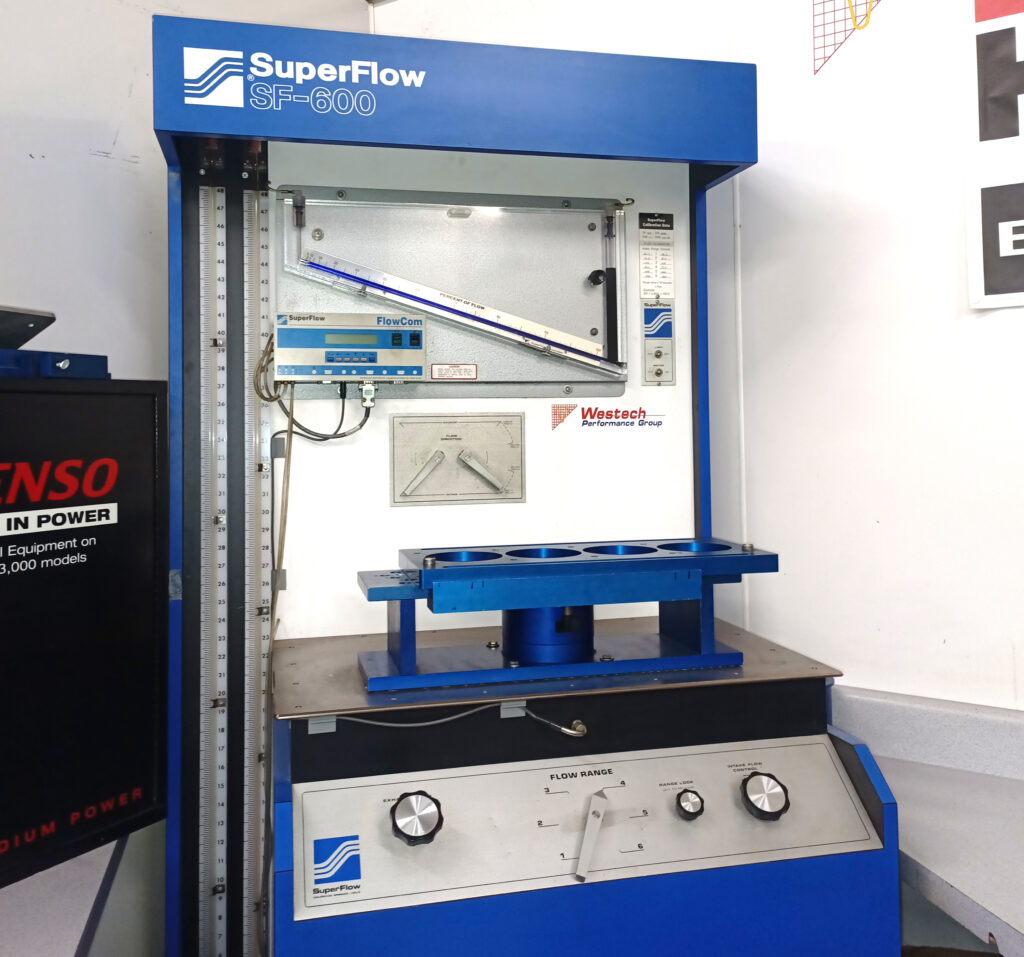Basic Facts and Operation of a Superflow Flowbench

The movement of air and fuel into and out of an engine is what generates power. A vehicle’s engine produces more power, the more it can move, and the faster it is able to move it. In principle, it’s straightforward, but in practice, it’s more difficult.
There are thousands of variables that influence not only the amount of air that comes into an engine but also the quality of the air that gets into the engine. The intake and exhaust ports on the cylinder head are the most restrictive and, therefore, the most crucial aspects to consider. As a result, each cylinder head must be carefully considered and designed for its specific application.
Because we don’t have enough space to demonstrate how to maximize the effectiveness of a cylinder head through port design and shaping, we won’t go into that detail here; such information might easily fill several hard-bound books. Instead, let’s talk about how to use a flow bench to measure the amount of air flowing into and out of a combustion chamber.
Measuring Airflow
New cylinder heads are evaluated according to a variety of factors, but one of the most essential is the amount of air that can flow through the intake and exhaust ports in one minute (cubic feet per minute (CFM)). The CFM rating should be customized to the engine’s intended flow rate and power level, which might fill a whole other book in and of itself. The flowbench is a tool that allows you to visually inspect the flow of data. Consider the following scenario: you’ve done a homeporting job on your heads (yet another book) and want to assess how much if any, your flow has improved as a result. The flowbench will provide you with the answer.
A wide range of flowbenches is available from SuperFlow, to meet the needs of race shops, garages, and component makers alike.
For the most part, the different flowbench sizes are necessary to match the flow requirements of various heads. It is not required to use the highest capacity flowbench in order to flow a motorcycle head.
The flow rate of SuperFlow benches ranges from 160 cfm at 10 inches of water to 1,100 cfm at 25 inches of water. One of the most important characteristics of SuperFlow benches is the FlowCom measurement technology, which eliminates the need for human reading of a manometer. The previous way of keeping an eye on the water levels may be preferred by certainly experienced engine builders, but the new system has a number of advantages over it.
Some men are wary of using computers. They like to use manometers because they can see what they are measuring. From a technical sense, the FlowCom is far more accurate than the other devices.
The primary disadvantage of using a manometer is that the measurements can fluctuate depending on the angle at which the meniscus is viewed. On smaller benches, where the scale isn’t as vast, this is especially true.
Another advantage of using a computerized measurement system is the lower cost. It is more cost-effective to manufacture the FlowCom than it is to use a manometer. Additionally, with the computer, you gain access to additional functions, such as the elimination of the need for lookup tables.
How A Flowbench Works
All a flowbench does is push or draw air through an orifice, which is most typically a cylinder head. A flowbench is not overly sophisticated in that it only has to accomplish this once. It then measures the amount and velocity (or pressure) of the air that is being pushed through the system, and it provides the information to the end-user. However, moving enough air to flow a racing cylinder head is difficult; as a result, the more airflow required, the larger and more intricate the flowbench must be.
SuperFlow has several different models of flowbenches.
A fantastic bench for even a large engine shop, the SuperFlow SF-750 is described as “the new standard in digital flow testing, with improved capacity over its predecessor, the SF-600, and increased accuracy with digital readings.” With 25 inches of water, it has a flow rate of 660 CFM and is equipped with SuperFlow’s
FlowComTM digital airflow
FlowComTM digital airflow measurement technology, which allows for precise, repeatable, and quick testing.
A digital airflow measurement and control system, FlowComTM assures precise digital airflow measurement by automatically monitoring test pressure and temperature and then displaying corrected flow data on the easy-to-read, precision display. When compared to traditional manometer type benches, which require users to perform computations to obtain adjusted flow numbers, this saves users a significant amount of time. The automatic motor controller that is included keeps the test pressure constant without the need for knobs and valves, and it also helps to extend the life of the motor by lowering the amount of heat created during operation. Operators can run the SF-750 for longer periods of time because of the reduced heat generated compared to benches that do not have motor control.
The market for flowbenches is expanding and transitioning.
The majority of cylinder heads were cast iron and had a fairly rough port design in the early 1970s when SuperFlow introduced its first flowbench to the market.
Because CNC heads are typically proprietary designs, more engine builders are using flowbenches to verify promised flow statistics and to make internal comparisons to aid in the determination of cam timing and other engine changes. Each port is additionally flowed to guarantee consistency across the cylinders as a whole.
When setting up a test program on the flowbench, consistency is also critical to the success of the program. A trustworthy A-B-A process, as well as precise records, should be established and maintained by engine builders.
